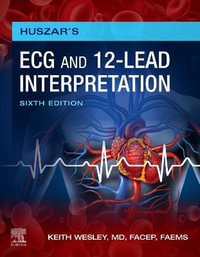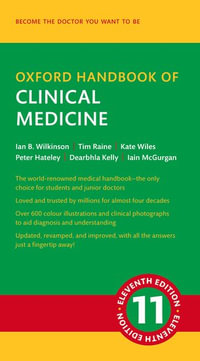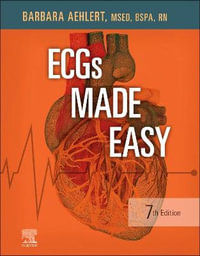1 Introduction.- 1.1 The limited value of classical coronary arteriography to predict the physiologic significance of coronary artery stenoses.- 1.2 Coronary flow reserve.- 1.3 Maximal coronary and myocardial blood flow.- 2 Methods of Measuring Myocardial Blood Flow.- 2.1 Laboratory methods.- 2.1.1 Timed venous collection.- 2.1.2 Electromagnetic flow measurement.- 2.1.3 Epicardial ultrasonic flow velocity measurement.- 2.1.4 Microspheres.- 2.2 Clinical methods.- 2.2.1 Coronary sinus thermodilution.- 2.2.2 Gas clearance methods.- 2.2.3 The Doppler catheter.- 2.2.4 Videodensitometry.- 2.2.5 Positron emission tomography.- 2.2.6 Other methods.- 3 Application of Indicator Dilution Theory in the Investigation of the Cardiovascular System.- 3.1 History.- 3.2 The two approaches in indicator dilution theory.- 3.2.1 Measurement of Flow.- 3.2.2 Measurement of Volume.- 3.2.3 Calculation of Mean Transit Time.- 3.3 Videodensitometry and digital arteriography for flow assessment in the coronary circulation.- 4 Problems and Limitations in the Application of Videodensitometry to Assess Coronary Blood Flow and Myocardial Perfusion.- 4.1 Influence of the contrast agent on flow.- 4.2 Changes in vascular volume.- 4.3 Contrast density vs contrast concentration.- 4.4 Difficulties in determination of mean transit time due to motion and insufficient image quality.- 4.5 Prerequisites for myocardial flow assessment by videodensitometry, according to the physiology of indicator dilution theory.- 5 A Model Study to Validate Calculation of Myocardial Blood Flow by Videodensitometry.- 5.1 Introduction.- 5.2 Materials and methods.- 5.2.1 Flow model.- 5.2.2 Image acquisition and processing.- 5.2.3 Absorption characteristics.- 5.2.4 Processing of time-density curves.- 5.2.5 Relation between flow and time parameters.- 5.3 Results.- 5.3.1 Applicability of Lambert-Beer's law.- 5.3.2 Fitting of the curves.- 5.3.3 Assessment of relative flow.- 5.3.4 Assessment of absolute flow.- 5.4 Discussion.- 5.5 Conclusions.- 6 Mean Transit Time for the Assessment of Myocardial Perfusion by Videodensitometry.- 6.1 Introduction.- 6.2 Methods.- 6.2.1 Animal instrumentation and experimental protocol.- 6.2.2 Achievement of constant vascular volume and different flow levels.- 6.2.3 Image acquisition and image processing.- 6.2.4 Processing of regions of interest and time-density curves.- 6.2.5 Data processing and statistical analysis.- 6.3 Results.- 6.3.1 Hemodynamic observations and verification of the animal model.- 6.3.2 Quality of image acquisition and time-density curves.- 6.3.3 Relation between inverse mean transit time and flow.- 6.3.4 Relation between 1/Tapp(1), 1/Tapp(2), 1/Tapp(3), Dmax, Dmax/Tapp(1), Dmax/Tapp(2), Dmax/Tapp(3), 1/Tmax and flow.- 6.4 Discussion.- 6.5 Clinical implications and limitations.- 7 The Concept of Maximal Flow Ratio for Immediate Evaluation of PTCA Result.- 7.1 Introduction.- 7.2 Methods.- 7.2.1 Patient population and study design.- 7.2.2 Image acquisition and processing.- 7.2.3 Processing of the regions of interest and time-density curves.- 7.2.4 Data processing and statistical analysis.- 7.3 Results.- 7.3.1 Clinical and hemodynamic data.- 7.3.2 Quality and reproducibility of image acquisition and time-density curves.- 7.3.3 Relation between MFR and exercise tests results.- 7.3.4 Comparison of T mn belonging to apparently normal arteries and to stenotic arteries before and after successful PTCA.- 7.4 Discussion.- 7.5 Limitations.- 8 Reproducibility of Mean Transit Time for Maximal Myocardial Flow Assessment.- 8.1 Introduction.- 8.2 Methods.- 8.2.1 Study protocol and image acquisition.- 8.2.2 Image processing and processing of TDCs.- 8.2.3 Data processing and statistical analysis.- 8.3 Results.- 8.4 Discussion.- 9 General Discussion.- 9.1 Discussion.- 9.2 Conclusions.- 9.3 Limitations.- 9.4 Spin-off and Present Applications.- A Is Nonionic Isotonic Iohexol the Contrast Agent of Choice for Quantitative Myocardial Videodensitometry?.- A.1 Introduction.- A.2 Methods.- A.2.1 Animal preparation and instrumentation.- A.2.2 Contrast injections.- A.2.3 Hemodynamic recordings.- A.2.4 Statistical analysis.- A.3 Results.- A.3.1 Baseline values and reactions to verapamil.- A.3.2 Effect of contrast injections on coronary blood flow.- A.3.3 Effect of contrast injections on left ventricular (dP/dt) max, left ventricular systolic pressure, and heart rate.- A.3.4 Reaction to 20 seconds coronary artery occlusion.- A.3.5 Relation between change in coronary blood flow and change in left ventricular (dP/dt)max.- A.4 Discussion.- A.5 Conclusion.- B Fitting Procedures for Time-Density Curves.- Summary.
























